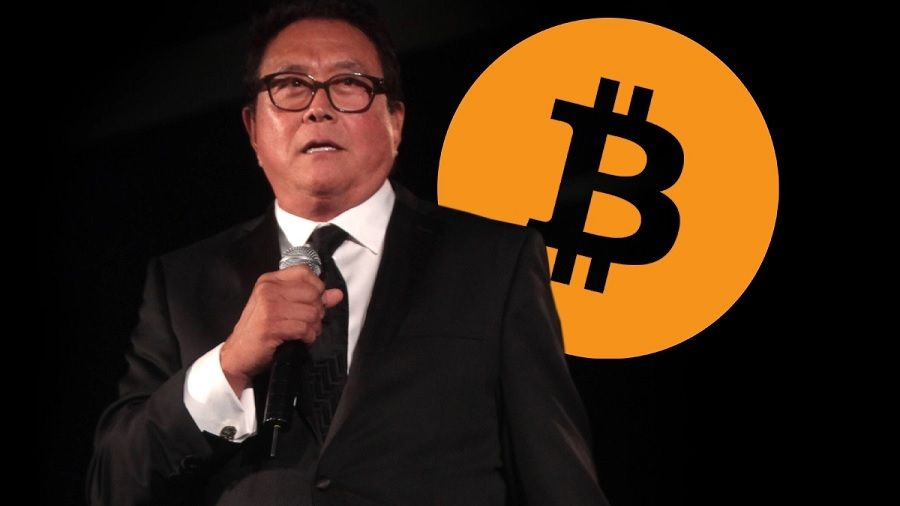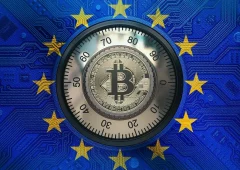Robert Kiyosaki Warns of Bitcoin Price Drop Amid Tariffs, Sees Opportunity to Buy More
01.02.2025 18:00 2 min. read Alexander Stefanov
Veteran investor Robert Kiyosaki has voiced concerns about a potential downturn in Bitcoin’s value, linking it to the growing influence of tariffs proposed by President Donald Trump.
As Bitcoin experiences a slight dip, trading 2% lower at $101,800, Kiyosaki suggests that the cryptocurrency, along with assets like gold and silver, could face a significant drop.
Trading volumes for Bitcoin have surged by 14%, reaching over $44 billion, as the price continues to fluctuate within a range of $101K to $106K. Kiyosaki believes that a sharp break in either direction could trigger further movement, possibly driving the price lower.
Kiyosaki, known for his investment insights, sees the looming downturn as an opportunity rather than a setback. On a recent social media post, he shared his thoughts, stating, “Trump’s tariffs may lead to a crash in Bitcoin, gold, and silver, but that’s exactly when I’ll buy more.” He emphasized that the true issue lies in increasing debt levels, which he predicts will worsen.
Kiyosaki views market crashes as temporary setbacks that allow savvy investors to purchase assets at discounted prices, positioning themselves for long-term wealth accumulation.
In line with Kiyosaki’s prediction, another well-known crypto analyst, Arthur Hayes, also expects a temporary crash, projecting that Bitcoin could fall to $70,000 before entering a major bull run, potentially reaching as high as $250,000. Despite the bearish outlook, both investors see significant opportunity in these market shifts.
-
1
Metaplanet Now Holds 13,350 BTC Worth $1.4 Billion
30.06.2025 10:27 1 min. read -
2
Bitcoin Whales Accumulate as Long-Term Holders Hit All-Time High
03.07.2025 21:00 2 min. read -
3
Public Companies Outpace ETFs in Bitcoin Buying: Here is What You Need to Know
02.07.2025 12:30 2 min. read -
4
Arizona Governor Vetoes Bill, Related to State Crypto Reserve Fund: Here Is Why
02.07.2025 16:00 2 min. read -
5
Crypto Inflows hit $1B Last Week as Ethereum Outshines Bitcoin in Investor Sentiment
07.07.2025 20:30 2 min. read
Ethereum Sparks Altcoin Season as FOMO Shifts Away From Bitcoin
Traders are rapidly shifting their focus to Ethereum and altcoins after Bitcoin’s recent all-time high triggered widespread retail FOMO.
BSTR to Launch With 30,021 BTC, Becomes 4th Largest Public Bitcoin Holder
BSTR Holdings Inc. is set to become the fourth-largest public holder of Bitcoin, announcing it will launch with 30,021 BTC on its balance sheet as part of its public debut.
Altcoins Gain Momentum as Bitcoin Dominance Drops to 61.6%
The cryptocurrency market is experiencing a notable shift in capital flows as Bitcoin’s market dominance has dropped to 61.6%, marking a 2.36% decrease.
France Eyes Bitcoin Mining to Solve Surplus Energy Challenges
French lawmakers have introduced a groundbreaking proposal that would turn excess electricity from energy producers into a valuable digital asset—Bitcoin.
-
1
Metaplanet Now Holds 13,350 BTC Worth $1.4 Billion
30.06.2025 10:27 1 min. read -
2
Bitcoin Whales Accumulate as Long-Term Holders Hit All-Time High
03.07.2025 21:00 2 min. read -
3
Public Companies Outpace ETFs in Bitcoin Buying: Here is What You Need to Know
02.07.2025 12:30 2 min. read -
4
Arizona Governor Vetoes Bill, Related to State Crypto Reserve Fund: Here Is Why
02.07.2025 16:00 2 min. read -
5
Crypto Inflows hit $1B Last Week as Ethereum Outshines Bitcoin in Investor Sentiment
07.07.2025 20:30 2 min. read


